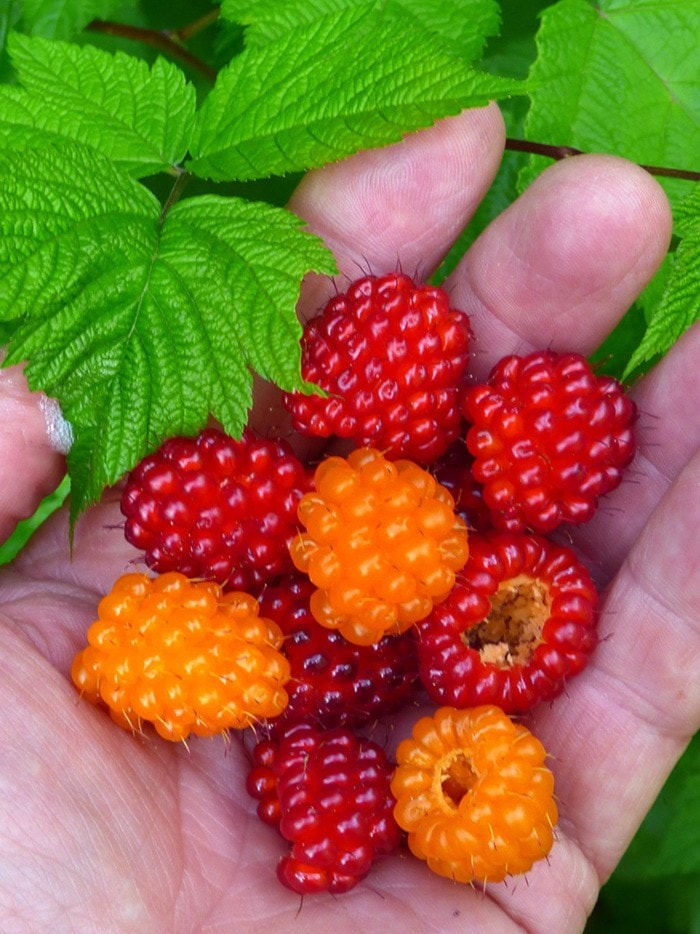I generally go cycling every morning with the exception of snow storms or black ice, and my favourite part of that daily circuit is a wooded path that runs from 237th Street to Abernethy Way.
It is just a strip of second growth forest with a gravel walkway running through it – popular with joggers and dog walkers.
At this time of year, with the bare trees, it easy to see through to the periphery and I noticed that most of it has been overrun with invasive plants.
The primary culprit here is Himalayan blackberry (Rubus armeniacus), which smothers much of the understory – but buttercup, English holly and ivy are also playing secondary roles in this occupation.
Still, when spring arrives, what’s left of the natural forest comes into bloom with the Salmonberry (Rubus spectabilis) and Indian Plum (Oemleria cerasiformis) beckoning the hummingbirds with sips of fresh nectar.
When these same bushes produce their early summer fruits, the black bears arrive to feast, largely ignoring the fluorescent yellow ‘beware of bear’ signs posted at each end of the path.
Some consider all of these a nuisance, with the prickly Salmonberries pushing their way into adjacent gardens and the temporary presence of the bears being an inconvenience for worried joggers.
Then there’s another train of thought, one that considers native plants as serving a higher purpose than just pleasing the aesthetic needs of one species on this planet – Homo sapiens.
The fact remains that these plants evolved and adapted to the local ecology long before humans arrived on the scene. And given that fact, we must assume that they weren’t created solely for our benefit, whatever that might be.
In fact, many of the plants that we dig out as noxious weeds are dedicated sources of pollen, fruit, shelter and erosion control that are critical to the well-being of what’s left of our natural ecosystems and the wildlife they support.
They are also extremely useful plants once you understand their superpowers: take a look down any steep forest slope and you’ll see drifts of massive sword ferns (Polystichum munitum) holding the soil in place and keeping erosion to a minimum. This allows our local salmon-bearing streams to be free of the silt that would otherwise clog up the gravel spawning grounds.
Go to any beach on the Gulf Islands and you’ll find carpets of grey-leaved stonecrops (Sedum spathulifolium) happily growing in the parched conditions that few cultivated garden plants would tolerate.
Conversely, the mire found on many a sunny streamside is often inhabited by the cheerful yellow monkey flower (Mimulus guttatus) happily blooming with its roots in running water.
All of these plants have adapted to surviving in extreme conditions. So no matter what you are dealing with in your garden, with a little research, I am confident that you can find an indigenous species to solve your quandary.
Native plants are also important components of modern medicine, with taxol from the Pacific Yew (Taxus brevifolia) being used to control breast cancer, and the dried bark from Cascara (Rhamnus purshiana) utilized as a natural laxative, in much the same way as it has been used by indigenous peoples for centuries.
So the next time you are walking through the forest or are weeding your garden and happen upon a native plant, don’t think of it as a weed, but as something that has been here a lot longer than you have, a living thing which has earned its place in the forests and meadows of the Pacific Northwest by evolving and adapting for millennia.
– Mike Lascelle is a local nursery manager and gardening author (hebe_acer@hotmail.com).
